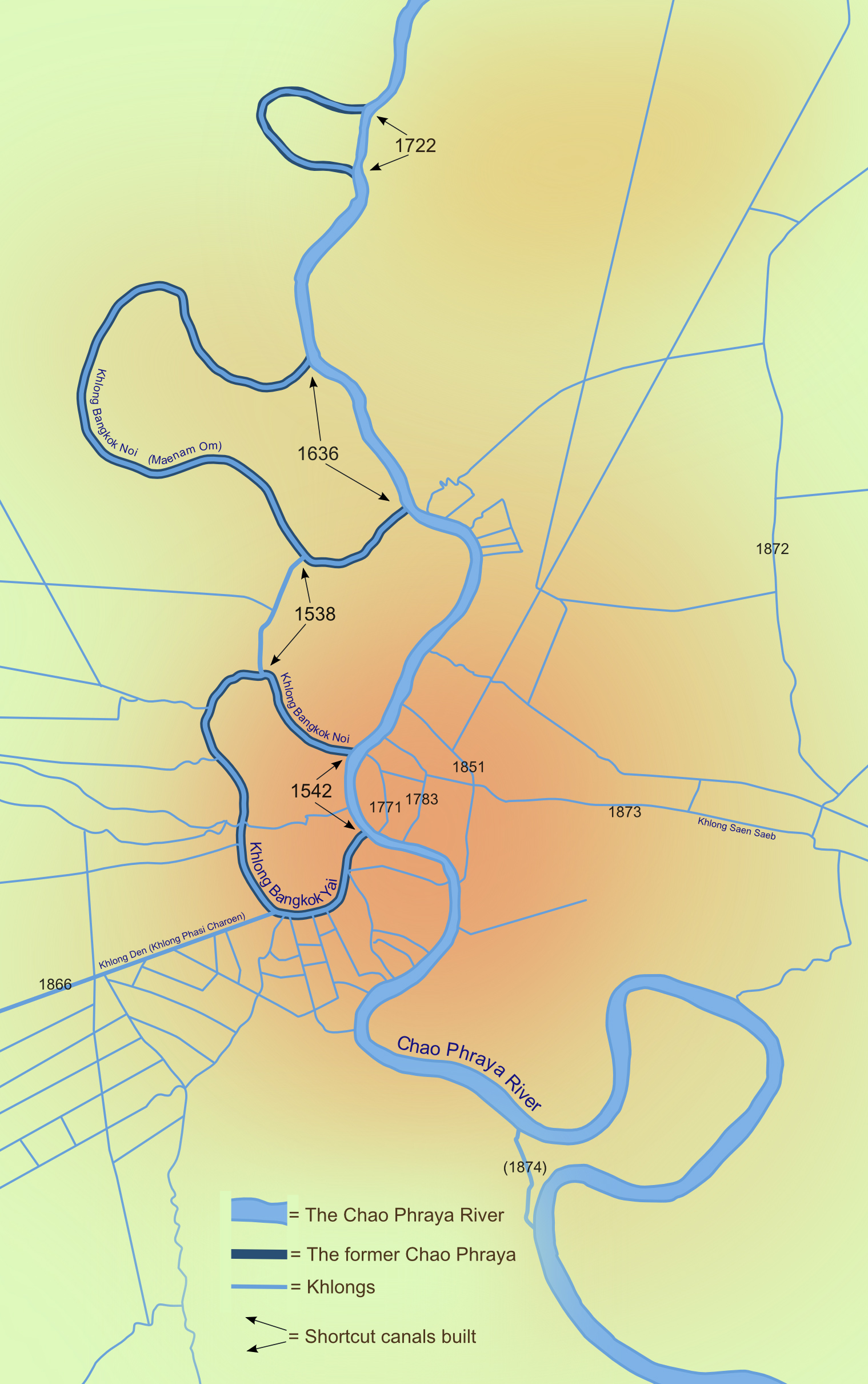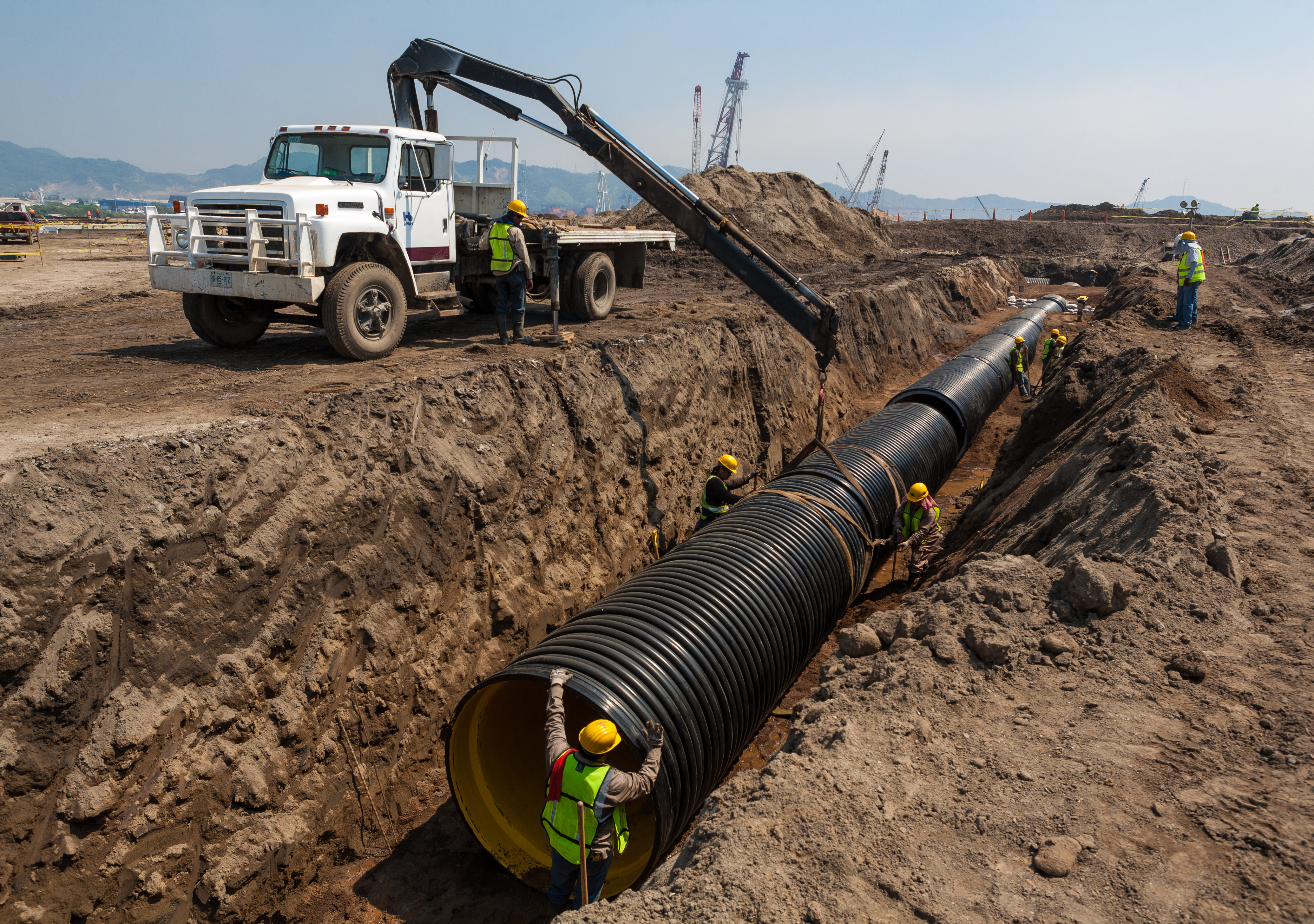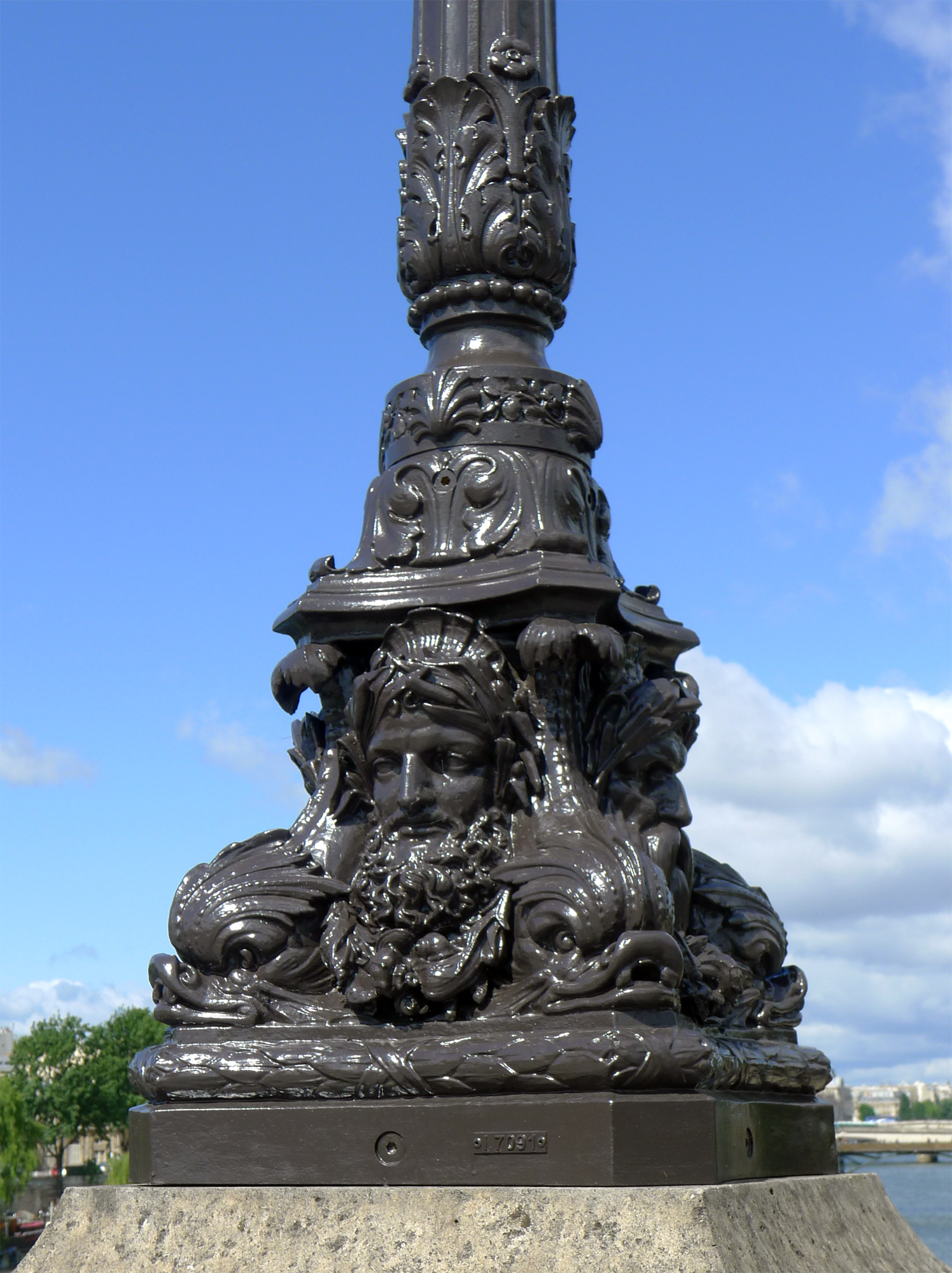|
Khlong Bangkok Yai
Khlong Bangkok Yai (, ; lit: 'Big Bangkok Canal') is a historic ''khlong'' (คลอง; canal) of Bangkok. The current length is 6 km (about 3 mi), through various canals as far as it terminates when it meets Khlong Mon near the confluence of three canals, Khlong Chak Phra, Khlong Mon and Khlong Bang Chueak Nang. In total, the canal passes through three districts, namely Bangkok Yai, Thon Buri and Phasi Charoen. History The course of Khlong Bangkok Yai was originally a meandering part of the Chao Phraya River, which used to be longer than in the present day. Those who travel by boat must cruise along the river, which took more than one day. In the reign of King Chairachathirat (1534–46) of the Ayutthaya Kingdom, he ordered the construction of a canal bypassing a loop of the Chao Phraya River, known as ''Khlong Lat Bangkok'' (คลองลัดบางกอก; 'Bangkok Short-Cut Canal'), thus reducing travel times. The Chao Phraya then changed course along ... [...More Info...] [...Related Items...] OR: [Wikipedia] [Google] [Baidu] |
Wat Molilokayaram
Wat Molilokkayaram Ratchawarawihan () is a Buddhist temple in Bangkok, Thailand. It is well known as a centre for the study of Pali. History The temple is a second class royal monastery, it was built in mid-18th century (around end of Ayutthaya period) without knowing who founded, in that era it was named "Wat Tai Talat" (วัดท้ายตลาด; lit: "Temple at market tip") because it is located in the area next to the end of Thonburi Market. Up until now this name is still used as an informal name for the temple. In 1767, King Taksin incorporated the temple as part of his Thonburi Palace. Later, in Rattanakosin period, King Phutthaloetla Naphalai (Rama ll) renovated the ordination hall and renamed "Wat Phutthaisawan" (วัดพุทไธสวรรค์). When King Nangklao (Rama lll) restored all the temple and rename to "Wat Molilokyasutharam" (วัดโมลีโลกยสุธาราม) and changed to Wat Molilokkayaram in the present. In additi ... [...More Info...] [...Related Items...] OR: [Wikipedia] [Google] [Baidu] |
Khlong Bangkok Noi
250px, Khlong Bangkok Noi near Wat Si Sudaram Khlong Bangkok Noi (, ; lit 'Small Bangkok Canal') is a ''khlong'' (คลอง; canal) in Bangkok; its name is the origin of the name Bangkok Noi District. The mouth of Khlong Bangkok Noi is located beside Siriraj Piyamaharajkarun Hospital (SiPH) and the former Bangkok Noi railway station (now the location of Thonburi Railway Station Pier). The current flows north through many historical and cultural landmarks, such as Ansorissunnah Royal Mosque, National Museum of Royal Barges, Wat Suwannaram, Thon Buri railway station, Wat Amarintharam, and Wat Si Sudaram, a Thai temple known as the place where the poet Sunthorn Phu studied in his childhood, as well as Wat Bang Oi Chang in Nonthaburi Province, etc. The canal terminates at the confluence with Khlong Om Non and Khlong Bang Yai at the Old Bang Yai Market in Bang Yai District, Nonthaburi Province, along the way, it is also connected to many canals, such as Khlong Chak Phra, ... [...More Info...] [...Related Items...] OR: [Wikipedia] [Google] [Baidu] |
Wat Paknam Bhasicharoen
Wat Paknam Bhasicharoen (, ) is a royal ''wat'' ('temple') located in Phasi Charoen district, Bangkok, at the Chao Phraya River. It is part of the Maha Nikaya fraternity and is the origin of the Dhammakaya tradition. It is a large and popular temple, supported by prosperous community members. Wat Paknam was established in 1610, during the Ayutthaya period, and received support from Thai kings until the late nineteenth century. By the beginning of the twentieth century, the temple had become nearly abandoned and had fallen into disrepair. The temple underwent a major revival and became widely known under the leadership of the meditation master Luang Pu Sodh Candasaro, who was abbot there in the first half of the twentieth century. Seven years after Luang Pu's death, became the new abbot until his death in 2021. Somdet Chuang made international headlines when his 2015 appointment as Supreme Patriarch, acting head of the Thai monastic community, was stalled and finally withd ... [...More Info...] [...Related Items...] OR: [Wikipedia] [Google] [Baidu] |
Wat Kalayanamitr
Wat Kalayanamitr Varamahavihara (, , ) is a Buddhist temple (wat) in Bangkok, Thailand. The temple is located in Wat Kanlaya sub-district, on the Thonburi bank of the Chao Phraya River. The temple was established in 1825 by Chaophraya Nikonbodin (born To, ), a wealthy Thai Chinese trader, who donated the temple to Rama III. Chaophraya Nikonbodin was an ancestor of the Kalayanamitr family, whose descendants include Saprang Kalayanamitr. A poem inscribed in the temple reads: Wat Kalayanamitr Varamahavihara is one of three family temples of the Kalayanamitr family, along with Wat Rakhang and Wat Chakkrawatdirachawat Woramahawihan. The family name Kalayanamitr derives from a poem inscribed in the temple. The ordination hall, stands out on the riverbank. It houses a huge Buddha image, Phra Buddha Trai Rattananayok (พระพุทธไตรรัตนนายก), or Luang Pho To (หลวงพ่อโต, Big Buddha) in Thai, known among the ethnic Chinese as Sampok ... [...More Info...] [...Related Items...] OR: [Wikipedia] [Google] [Baidu] |
Wat Nuannoradit
Wat Nuannoradit () is the 3rd ranked temple in Thailand. It is on the western side of the Khlong Bangkok Yai (Bangkok Yai canal) and opposite Wat Praduchimplee and Wat Nuan Noradit School. History Wat Nuannoradit is ancient and was deserted for a long time. Some people believe that it was built in the era of the Ayutthaya Kingdom. Its older name was Wat Makok Nai ("Inside Bangkok canal temple"), paired with Wat Makok Nok ("Outside Bangkok canal temple", now Wat Arun). At the end of the reign of Chao khun Phra Ratchaphan (Nuan), who was Chao Phraya Akkhamahasena ( Bunnag)’s wife and the sister of Queen Amarindra, she repaired Wat Makok Nai, assigning responsibility to her son Chao Phraya Phra khlang (Dit Bunnag). Jao Phraya Phraklan (Dit Bunnaak) repaired Wat Makok Nai after he finished repairing Wat Prayurawongsawat in 2379 of the Buddhist era (1836). After that King Chulalongkorn Chulalongkorn (20 September 1853 – 23 October 1910), posthumously honoured as Ki ... [...More Info...] [...Related Items...] OR: [Wikipedia] [Google] [Baidu] |
Wat Hongratanaram
Wat Hong Rattanaram Ratchaworawihan, or just called Wat Hong Rattanaram () is an ancient Thai Buddhist temple located in Bangkok rim the Khlong Bangkok Yai canal. It is classified as the second rank of royal temple and can be considered a temple of Prince Pinklao. This temple built since late Ayutthaya period by wealthy Chinese named Hong, who was donated funds to build a temple on the banks of the Khlong Bangkok Yai. Hence the names Wat Hong, Wat Chao Sua Hong or Wat Chao Khrua Hong after the benefactor. After the fall of Ayutthaya in 1767, King Taksin decided to locate his new capital further away from Burma, he chose this area in Thonburi between two canals Bangkok Yai and Bangkok Noi. He built his palace, Wang Derm near the old fort ( Wichai Prasit Fort) and chose to worship at Wat Hong just 500 m (1,640 ft) to the south. During his reign, he also has patronized this temple in the royal support since it was a religious educational centre. Until the reign of King Nangkl ... [...More Info...] [...Related Items...] OR: [Wikipedia] [Google] [Baidu] |
House Of Worship
A place of worship is a specially designed structure or space where individuals or a group of people such as a congregation come to perform acts of devotion, veneration, or religious study. A building constructed or used for this purpose is sometimes called a house of worship. Temples, churches, mosques, and synagogues are main examples of structures created for worship. A monastery may serve both to house those belonging to religious orders and as a place of worship for visitors. Natural or topographical features may also serve as places of worship, and are considered holy or sacrosanct in some religions; the rituals associated with the Ganges river are an example in Hinduism. Under international humanitarian law and the Geneva Conventions, religious buildings are offered special protection, similar to the protection guaranteed hospitals displaying the Red Cross or Red Crescent. These international laws of war bar firing upon or from a religious building. Religious arch ... [...More Info...] [...Related Items...] OR: [Wikipedia] [Google] [Baidu] |
Manager Daily
''Manager Daily'' (; ) is a Thai-language daily newspaper published in Bangkok Bangkok, officially known in Thai language, Thai as Krung Thep Maha Nakhon and colloquially as Krung Thep, is the capital and most populous city of Thailand. The city occupies in the Chao Phraya River delta in central Thailand and has an estim ... and distributed nationwide. It is the second best-selling newspaper in Thailand. ''Manager Daily 360 Degree'' has a circulation in excess of 850,000 copies. History ''Manager Daily'' was founded by media mogul Sondhi Limthongkul, who also launched the satellite broadcasting channel ASTV. It is part of the Manager Group, which also includes the '' Asia Times'' newspaper, based in Hong Kong. See also * Media of Thailand References External links * Newspapers published in Thailand Thai-language newspapers Mass media in Bangkok Manager Media Group {{Thailand-stub ... [...More Info...] [...Related Items...] OR: [Wikipedia] [Google] [Baidu] |
Cultural Tourism
Cultural tourism is a type of tourism in which the visitor's essential motivation is to learn, discover, experience and consume the cultural attractions and products offered by a tourist destination. These attractions and products relate to the intellectual, spiritual, and emotional features of a society that encompasses arts and architecture, historical and cultural heritage, culinary heritage, literature, music, creative industries as well as the living cultures with their lifestyles, value systems, beliefs and traditions.Buczkowska, K. (2011). Cultural Tourism – Heritage, Arts and Creativity. Poznań: 38-50. Overview Cultural tourism experiences include, but are not limited to, architectural and archaeological treasures, culinary activities, festivals or events, historic or heritage, sites, monuments and landmarks, museums and exhibitions, national parks and wildlife sanctuaries, and religious venues. It includes tourism in urban areas, particularly historic or large ci ... [...More Info...] [...Related Items...] OR: [Wikipedia] [Google] [Baidu] |
Drainage
Drainage is the natural or artificial removal of a surface's water and sub-surface water from an area with excess water. The internal drainage of most agricultural soils can prevent severe waterlogging (anaerobic conditions that harm root growth), but many soils need artificial drainage to improve production or to manage water supplies. History Early history The Indus Valley Civilization had sewerage and drainage systems. All houses in the major cities of Harappa and Mohenjo-daro had access to water and drainage facilities. Waste water was directed to covered gravity sewers, which lined the major streets. 18th and 19th century The invention of hollow-pipe drainage is credited to Sir Hugh Dalrymple, who died in 1753. Current practices Simple infrastructure such as open drains, pipes, and berms are still common. In modern times, more complex structures involving substantial earthworks and new technologies have been common as well. Geotextiles New storm water drainag ... [...More Info...] [...Related Items...] OR: [Wikipedia] [Google] [Baidu] |
Waterway
A waterway is any Navigability, navigable body of water. Broad distinctions are useful to avoid ambiguity, and disambiguation will be of varying importance depending on the nuance of the equivalent word in other ways. A first distinction is necessary between maritime shipping routes and waterways used by inland water craft. Maritime shipping routes cross oceans and seas, and some lakes, where navigability is assumed, and no engineering is required, except to provide the draft for deep-sea shipping to approach seaports (Channel (geography), channels), or to provide a short cut across an isthmus; this is the function of ship canals. Dredged channels in the sea are not usually described as waterways. There is an exception to this initial distinction, essentially for legal purposes, see under international waters. Where seaports are located inland, they are approached through a waterway that could be termed "inland" but in practice is generally referred to as a "maritime waterway ... [...More Info...] [...Related Items...] OR: [Wikipedia] [Google] [Baidu] |
Lampposts
A street light, light pole, lamp pole, lamppost, streetlamp, light standard, or lamp standard is a raised source of light on the edge of a road or path. Similar lights may be found on a railway platform. When urban electric power distribution became ubiquitous in developed countries in the 20th century, lights for urban streets followed, or sometimes led. Many lamps have light-sensitive photocells that activate the lamp automatically when needed, at times when there is little-to-no ambient light, such as at dusk, dawn, or the onset of dark weather conditions. This function in older lighting systems could be performed with the aid of a solar dial. Many street light systems are being connected underground instead of wiring from one utility post to another. Street lights are an important source of public security lighting intended to reduce crime. History Preindustrial era Early lamps were used in the Ancient Greek and Ancient Roman civilizations, where light primarily ser ... [...More Info...] [...Related Items...] OR: [Wikipedia] [Google] [Baidu] |






